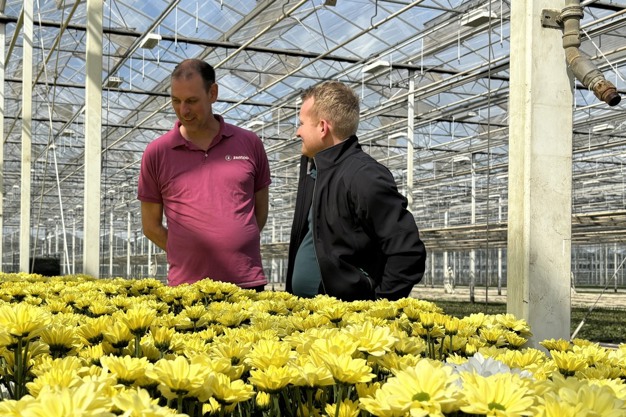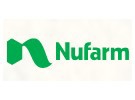VDL Fleurs, a chrysanthemum nursery belonging to the Zentoo group, wants to rely less on chemicals and more on effective solutions to control diseases and pests. They have discovered how to effectively and sustainably control various pests using a combination of biology and green (biological) crop protection agents. Consultant Gerwin Murre at Nufarm takes a walk around the farm in Naaldwijk (the Netherlands) together with farm manager Marco Boekestijn.

Marco Boekestijn manages 3.5 hectares of spray chrysanthemums with a team of employees. They are grown year-round, in five cycles a year. Crop protection is organized in close consultation with Van Iperen, with an emphasis on growing without chemicals, and this approach is increasingly successful. Marco emphasizes the need to find a balance with three pillars: sustainability, cleanliness, and cost-efficiency. This is best achieved through continuous monitoring and intervening when necessary.
Clean through the winter
"I am enthusiastic about the use of NeemAzal-T/S combined with predatory bugs and/or parasitic wasps," Marco explains. "Last winter, we managed to control spider mites and thrips with this combination. I follow a schedule of weekly spraying with NeemAzal-T/S, always in the morning. With lots of pressure and the addition of an uptake enhancer, I ensure leaf coverage. We see that the predatory mite Phytoseiulus persimilis continues to perform within this concept. The fact that we no longer need to use chemicals with this combination is, of course, an advantage." Gerwin from Nufarm adds, "I am pleased with these results and Marco's enthusiasm. It confirms our findings and our goals to combine biology with our agent NeemAzal-T/S, as well as other green agents in our package."
Problems with thrips and aphids
Besides spider mites and, to a lesser extent, leafminers, thrips and aphids (green peach aphid and black bean aphid) are damaging to crop quality. Marco says, "Last spring, we received cuttings containing thrips. It seemed to be getting out of hand. We acted quickly by scaling up the use of montdorensis predatory mites. Again, we combined this with NeemAzal-T/S with great results. Letting nature do its job is an advantage. It is important to stop using NeemAzal-T/S before the flowers change color. We can still use Batavia in the flowering phase, which is relatively mild for predatory mites, but that will end next year. This presents new challenges. We may have to remove certain varieties (the purple-colored chrysanthemums) from our range."
Quality doesn't come automatically
Current developments, in which biology plays an increasingly important role, mean that growers have to be alert to changes in the greenhouse. Marco notes, "Quality doesn't come automatically. I have been active in chrysanthemums almost all my life, and almost every day you can find me in the greenhouse, alert to any infestation." Gerwin concludes, "I see that VDL Fleurs dares to lead the way while being critical of results. Because, in the end, you want results as a company."
For more information:
Gerwin Murre  Nufarm B.V.
Nufarm B.V.
Rivium Quadrant 75
2909 LC Capelle aan den IJssel
Tel: +31 (0)6 266 253 55
[email protected]
www.nufarm.com
